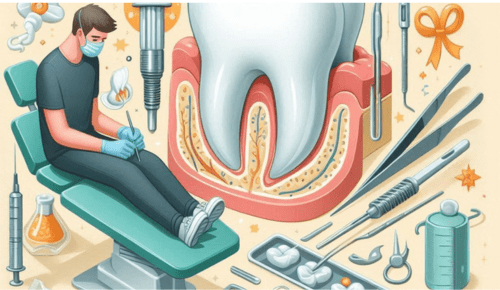
Cause, Prevention, and Treatment of Dental Fluorosis in Fontana
Dental fluorosis is an enamel defect due to overexposure to fluoride during the early years of tooth development. Fluoride supports decay prevention but can lead to dental fluorosis in cases of overexposure, causing discoloration and, in extreme cases, physical harm to the teeth as explained by a dentist in Fontana, CA. Because Fontana has fluoridated water, parents and caregivers must understand what dental fluorosis is. In this article, you will learn about the causes of dental fluorosis, and how to prevent and treat it.
What is Dental Fluorosis?
There are two main types of dental fluorosis — mild and moderate. This symptom emerges when children (generally under eight years of age) eat too much fluoride before their teeth erupt from beneath the gums. Exposure to this sensitivity hurts the enamel, which is the outermost layer of the normally occurring teeth structure, and therefore causes changes in its appearance. Fluorosis may be mild, with white streaks or specks on the tooth surface, or it can be so severe that dental enamel becomes stained and pitted.
What Leads to Dental Fluorosis
Dental fluorosis is caused mainly by the consumption of too much fluoride from multiple sources, such as:
- Water: In many places—including Fontana—they add fluoride to the local water system to fight cavities. However, at high levels, fluoride can cause fluorosis.
- Toothpaste and Mouth rinses: Children might swallow too much fluoride from toothpaste or mouth rinses if spitting is not done.
- Fluoride Tablets: Taking too many fluoride tablets can also result in a high intake of this substance.
Dental Fluorosis Symptoms
- Dental fluorosis: Symptoms of dental fluorosis differ according to the severity of the condition:
- Mild Fluorosis: This is the mildest and most common type of fluorosis, presenting as small white spots or streaks on teeth.
- Moderate Fluorosis: The white spots are larger, and there will be some brown staining.
- Severe Fluorosis: The enamel can be pinpricked and the patient has noticeable brown or dark spots. The teeth may also have a bumpy feel.
Treatment of Dental Fluorosis
The severity of dental fluorosis and the cosmetic concern it presents to the patient respectively determine how we treat this condition. Below are some of the most common treatment options:
- Teeth Whitening: The treatment for fluorosis tends to lighten the severity of discolorations and teeth whitening procedures are an option. However, this kind of treatment is primarily useful for mild cases and might not be appropriate for severe fluorosis.
- Dental Veneers: In more serious situations, dental veneers can be utilized to isolate the teeth involved. Veneers are thin shells of porcelain or composite resin that are cemented on the tooth front surfaces to make them clean, and neat.
- Composite Bonding: In composite bonding, a tooth-colored resin is applied to the teeth in need. This will be bonded in place and smoothed to blend with the rest of the tooth and the surrounding teeth, ensuring optimal aesthetics.
- Crowns: For extreme fluorosis that has badly compromised the enamel, dental crowns might be needed. Crowns are placed over the entire tooth, providing protection as well as aesthetic beauty.
Dental fluorosis can have a very serious impact on the look of your child’s smile. Knowing how the condition develops, and what steps parents may take to prevent it can help Fontana residents protect their children from fluorosis. Frequent check-ups and talks with a dental professional guarantee that your fluoride consumption is either within safe margins or extra attention can be paid to alleviate any concerns relating to dental fluorosis. In instances where some degree of fluorosis does occur, the good news is that there is a range of treatment options available to address this issue and restore the appearance of any affected tooth so that children can continue having healthy, confident smiles.



